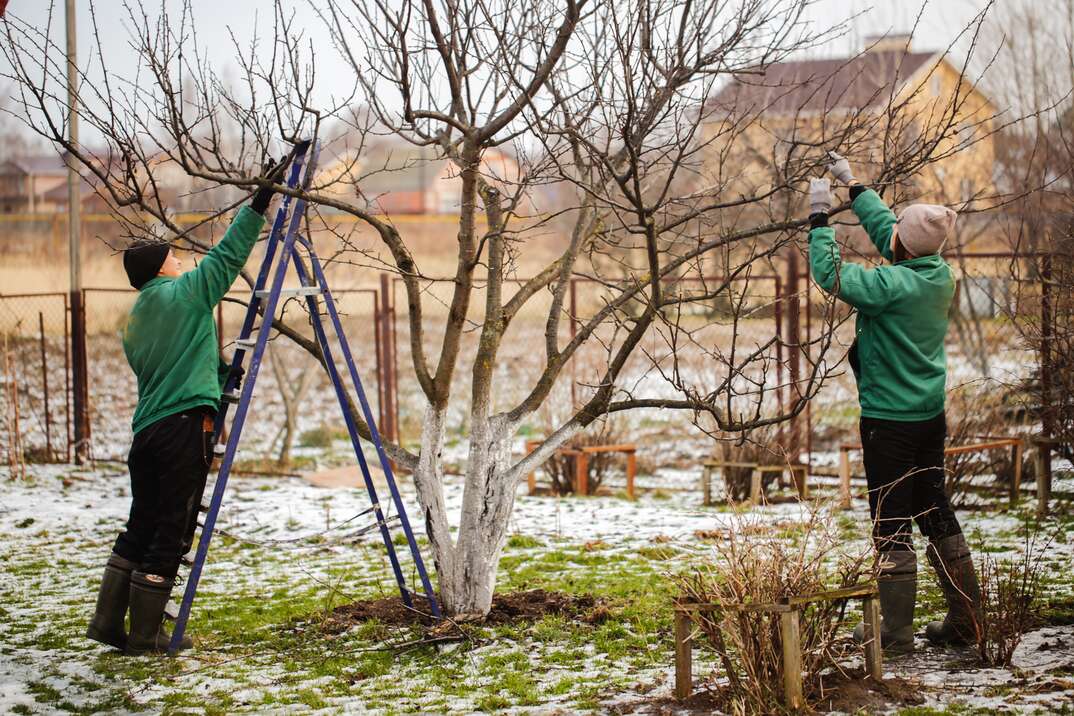This Arbor Day, Take Care of Your Trees. Here's a a Tree-Care Guide

Taking care of the trees in your yard involves a blend of art, science and attentiveness.
Read More Lawn and Landscaping Articles
Whether you're nurturing young saplings or maintaining mature specimens, the right care can ensure your trees remain healthy, beautiful and structurally sound for years to come.
Understanding Young Trees and Initial Care
Young trees are especially vulnerable as they adjust to their planting environment. After planting a new tree, the focus should primarily be on helping it establish roots and adapt without stress. Watering plays a crucial role in this phase. A newly planted tree needs consistent moisture to allow for the uptake of nutrients from the soil. It's essential to water deeply rather than frequently, ensuring moisture reaches the deep roots. During the first few years, avoid the urge to over-fertilize, which can do more harm than good, pushing growth that the young tree cannot structurally support.
Pruning for Health and Structure
Pruning is vital for maintaining a tree's structure, health and appearance. However, the process must be done carefully to avoid damaging the tree. The goal of pruning is to remove dead or diseased branches, warding off the spread of decay and disease. It also shapes the tree’s growth in a favorable direction, preventing future problems. Homeowners should undertake most pruning during the dormant season when the tree is not actively growing, although dead branches can and should be removed as soon as they are noticed.
The Role of Mulching
Mulching is more than just a way to improve the appearance of your garden. It’s also a critical care step for maintaining tree health. Applying mulch around the base of your tree can help retain soil moisture, suppress weeds and regulate soil temperature. Mulch should be spread in a donut shape around the tree, avoiding direct contact with the trunk. This will help prevent too much moisture from building up against the bark, which can lead to rot and disease.
Organic mulches, like bark chips, straw and shredded leaves, enrich the soil as they decompose, improving fertility and encouraging beneficial microbial activity. Inorganic mulches, such as gravel or rubber chips, are more durable and less nurturing to the soil, but they excel in controlling erosion and maintaining soil moisture without decomposing. Additionally, compost acts as a dual-purpose mulch, providing substantial nutrients to the soil while also retaining moisture. Choosing the right type of mulch depends on the specific needs of your garden, such as moisture retention, weed suppression or soil health improvement.
Regular Raking and Garden Maintenance
While often overlooked, regular raking and removal of debris around trees are important. Fallen leaves and dead branches can harbor pests and diseases, which might infect the tree. Keeping the base of your tree clean helps prevent these risks and discourages rodents that might chew on the tree bark.
Monitoring for Pests and Diseases
Watching out for pests and diseases that may try to make their home in your trees can save you a lot of trouble down the road. Some common signs include discolored leaves, premature leaf drop and unusual leaf shapes or sizes. At the first sign of trouble, it’s wise to consult an ISA Certified Arborist who can offer a professional diagnosis and treatment options. Early detection and management of these issues are crucial to prevent them from escalating.
More Related Articles:
- Spring Lawn Maintenance: 7 Tasks for Your To-Do List
- 6 Ways to Conserve Water Without Sacrificing Your Lawn
- How Much Will You Pay for Lawn Care Services?
- Everything You Need to Know About Lawn Aeration
- 11 Ways to Bring a Damaged Lawn Back to Life
Irrigation: How Much Water and When
Determining when and how much your tree needs to be watered is a common concern for homeowners. The watering needs of a tree depend on the species, the soil and the climate. A good guideline is to water generously but infrequently, letting the soil dry out between waterings, which encourages deep root growth. During dry spells or for trees in particularly sandy soil, increase watering to compensate for the faster drainage.
Protecting Trees from Mechanical Damage
Another important aspect of tree care is protecting the tree from mechanical damage, which can come from lawnmowers and weed whackers. Damage to the bark can be severe, opening a path for diseases and pests. Physical barriers or careful landscaping practices can protect trees from such unintended harm.
When to Call a Professional
Most aspects of tree care can be handled by a diligent homeowner. However, there are situations where it’s best to call in a professional. Complex pruning, disease management and any signs of structural instability should be assessed by an ISA Certified Arborist. They can provide specialized care that ensures the safety and health of your trees.
Effective tree care requires understanding the specific needs of your trees and responding appropriately to environmental conditions. Regular maintenance like watering, mulching, pruning and pest control plays a significant role in a tree's life. By following these tree care tips and seeking professional advice when necessary, you can ensure your trees add beauty and value to your property for decades.
Elocal Editorial Content is for educational and entertainment purposes only. Editorial Content should not be used as a substitute for advice from a licensed professional in your state reviewing your issue. Systems, equipment, issues and circumstances vary. Follow the manufacturer's safety precautions. The opinions, beliefs and viewpoints expressed by the eLocal Editorial Team and other third-party content providers do not necessarily reflect the opinions, beliefs and viewpoints of eLocal or its affiliate companies. Use of the Blog is subject to the
Website Terms and Conditions.The eLocal Editorial Team operates independently of eLocal USA's marketing and sales decisions.



